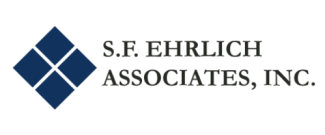
By the Numbers - November 2019
Source: Direxion Funds
November 15, 2019
- BIG PERCENTAGE – The market cap of the S&P 500 is 80% of the total market capitalization of all US stocks as of 9/30/19 (source: BTN Research).
- IS THAT ENOUGH? - 58% of 1,015 Americans surveyed in August 2019 believe that a retiree who has accumulated $1 million in pre-tax investment accounts will be able to enjoy a “comfortable” lifestyle in retirement (source: TD Ameritrade).
- OVER PROMISED, UNDERFUNDED - The pension plans for state and local government employees nationwide are just 52% funded, i.e., the current fair market value of the assets backing public sector pension plans are equal to 52% of the present value of future liabilities as promised by the pension plans (source: Federal Reserve).
- HEALTH INSURANCE - The average annual cost for health insurance coverage for a family plan in 2019 is $20,576, with the employer paying 71% of the total ($14,561) and the employee paying 29% ($6,015). Ten years ago (2009), the average cost was $13,375 and the employer/employee split was 74/26 (source: Kaiser FF)
- WAY OFF - In January 2009, the Congressional Budget Office released a 10-year forecast for our nation’s national debt. The debt projection made in 2009 for the end of fiscal year 2019 (i.e., 9/30/19) was $15.973 trillion. Our actual national debt as of 9/30/19 was $22.719 trillion (source: The Budget and Economic Outlook).
- MOST EVER – 8,567 American retail stores have closed YTD through 9/27/19, exceeding the all-time record of 8,139 store closures from 2017 (source: Coresight Research).
- WHERE DO YOU RANK? - It takes adjusted gross income (AGI) of $2.37 million to rank in the top one-tenth of 1% of US taxpayers. It takes AGI of $515,371 to rank in the top 1% of taxpayers. It takes AGI of $208,053 to rank in the top 5% of taxpayers. It takes AGI of $145,135 to rank in the top 10% of taxpayers. This data, covering tax year 2017, was released last week (source: Internal Revenue Service).
- THEY’LL BE RUNNING THE SHOW - By the year 2025, more than 50% of the US workforce will be “millennials” or younger. Millennials were born between 1981-97 and will be ages 28-44 in 2025 (source: Inc. Magazine).
- EXPENSIVE TO LIVE - 10% of American homeowners spend at least 50% of their pre-tax income on their housing costs. 25% of American renters spend at least 50% of their pre-tax income on their housing costs (source: Joint Center for Housing Studies at Harvard University).
- A DIFFERENT TYPE OF CAPITALISM - China’s economy, worth $14 trillion today, is 80% owned by individuals in the private sector, compared to being 50% private-sector owned in the late 1990s and 0% private-sector owned in 1978 (source: “Capitalism, Alone,” author Branco Milanovic).
- NOT ALL INCOME - The maximum taxable wage base subject to the social security payroll tax will be $137,700 in calendar year 2020. An estimated 82.5% of earnings of all US workers will be subject to the social security payroll tax next year, a levy that is 6.2% for employees and 6.2% for employers (source: 2019 Trustees Report).
- A FAILURE TO PLAN - 25% of American seniors receive at least 90% of their pre-tax income from their monthly Social Security retirement benefit (source: AARP).
- NOT BAD AT ALL - The average 401(k) contribution rate by American employees in the first quarter 2019 is 8.8% of salary. This average is based upon those employees participating in an employer-sponsored pre-tax 401(k) retirement account (source: Fidelity Investments).
- OWNERS AND RENTERS - The 111.2 million households that existed in the United States on 9/30/09 were split 68/32 between 75.2 million owners and 36.0 million renters. The 122.7 million households in the United States on 9/30/19 were split 65/35 between 79.5 million owners and 43.2 million renters (source: Census Bureau).
- IN ONE MORE GENERATION - If China’s $14.2 trillion economy grows at +4% per year into the future and if the USA’s $21.5 trillion economy grows at +2% per year into the future, China’s economy will become the largest in the world in the year 2041 or 22 years down the road (source: BTN Research).
- PROCRASTINATE - 37% of 2,003 Americans surveyed in the 1st quarter 2019 had less than $5,000 accumulated in pre-tax retirement accounts (source: Northwestern Mutual Planning & Progress Study).
- LESS THAN A YEAR AWAY - The 2020 presidential election will take place on 11/03/20. 139 million Americans voted in the November 2016 presidential election, equal to 60.2% of our nation’s voting-eligible population. The state with the highest percentage of voters who participated in the 2016 election was Minnesota, with 74% of its eligible voters going to the polls (source: U.S. Elections Project).
- IX BEST YEARS OF MY LIFE - Less than 1 of every 3 Americans who are at least age 25 (31% of this group) have completed college, i.e., they have at least a bachelors’ degree (source: Census Bureau).

